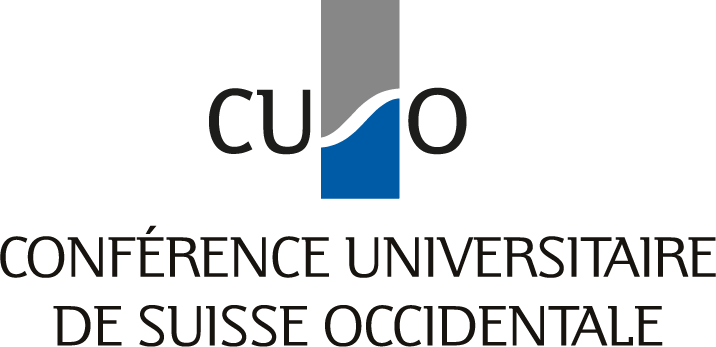Information détaillée concernant le cours
| Titre | Ecole d’été 2017 |
|||||||||||||||||||||||||||||||||||||||||||||||
| Dates | 3-6 septembre 2017 |
|||||||||||||||||||||||||||||||||||||||||||||||
| Responsable de l'activité | Yves Tillé |
|||||||||||||||||||||||||||||||||||||||||||||||
| Organisateur(s)/trice(s) | M. Yves Tillé, UNINE (Président), Mme Caroline Gillardin, UNINE (coordinatrice) |
|||||||||||||||||||||||||||||||||||||||||||||||
| Intervenant-e-s | Prof. Sudipto Banerjee, UCLA Prof. Andrew Harvey, University of Cambridge Prof. Jonathan Taylor, Stanford University (invité par l'EPFL) |
|||||||||||||||||||||||||||||||||||||||||||||||
| Description |
Professor Sudipto Banerjee(UCLA) Title : High-dimensional Bayesian Geostatistics
AbstractWith the growing capabilities of Geographic Information Systems (GIS) and user-friendly software, statisticians today routinely encounter geographically referenced data containing observations from a large number of spatial locations and time points. Over the last decade, hierarchical spatiotemporal process models have become widely deployed statistical tools for researchers to better understand the complex nature of spatial and temporal variability. However, fitting hierarchical spatiotemporal models often involves expensive matrix computations with complexity increasing in cubic order for the number of spatial locations and temporal points. This renders such models unfeasible for large data sets. This article offers a focused review of two methods for constructing well-defined highly scalable spatiotemporal stochastic processes. Both these processes can be used as "priors" for spatiotemporal random fields. The first approach constructs a low-rank process operating on a lower-dimensional subspace. The second approach constructs a Nearest-Neighbor Gaussian Process (NNGP) that ensures sparse precision matrices for its finite realizations. Both processes can be exploited as a scalable prior embedded within a rich hierarchical modeling framework to deliver full Bayesian inference. These approaches can be described as model-based solutions for big spatiotemporal datasets. The models ensure that the algorithmic complexity has $\sim n$ floating point operations (flops), where $n$ the number of spatial locations (per iteration). We compare these methods and provide some insight into their methodological underpinnings. Professor Andrew Harvey(University of Cambridge) Title : Modelling Volatility
Abstact 1 Nonlinear models and changing volatilityUnobserved components. Introduction to DCS/GAS models. Nonlinear models: independence, uncorrelatedness and martingale di¤erences. Distributions and heavy tails. Properties of nancial returns. Standard volatility models: GARCH, EGARCH and stochastic volatility. Intra-day data, realized volatility, range and duration. Professor Jonathan Taylor(Stanford University) Title : Critical points of random functions : geometry and inference
AbstactThe topic of the lectures will broadly be about the properties of critical points of random functions with particular emphasis on statistical inference. We will begin with a brief introduction to smooth Gaussian processes and their path properties, with an application to signal detection with smooth background noise. One of the main tools used in the calculations is the Kac-Rice formula which is used to compute the certain number of critical points of a given type. Broadly speaking, the Kac-Rice formula serves as a model for conditioning a smooth function to have a critical point in a given location. This notion of conditioning is important for the final part of the lectures. In the final part of the lectures, our random functions are objective functions of (random) convex programs, we discuss selective inference in which data analysts are allowed to observe some aspects of the solution to the convex program, i.e. some aspects of a given critical point. Particular importance is placed on the concrete example of the LASSO, specifically inference after selection through the LASSO.
Programme
|
|||||||||||||||||||||||||||||||||||||||||||||||
| Lieu |
Eurotel Victoria VILLARS |
|||||||||||||||||||||||||||||||||||||||||||||||
| Information |
Eurotel Victoria Villars
|
|||||||||||||||||||||||||||||||||||||||||||||||
| Frais | Doctorant CUSO chambre double: 200 CHF Lors de votre inscription, merci de bien vouloir indiquer dans la zone commentaire si vous désirez une chambre simple, ou double et le nom de la personne avec qui vous souhaiteriez partager votre chambre. Dans le cas où rien n'est indiqué, une chambre simple sera réservée. |
|||||||||||||||||||||||||||||||||||||||||||||||
| Inscription | Versement sur compte postal: |
|||||||||||||||||||||||||||||||||||||||||||||||
| Places | 32 |
|||||||||||||||||||||||||||||||||||||||||||||||
| Délai d'inscription | 01.09.2017 |


